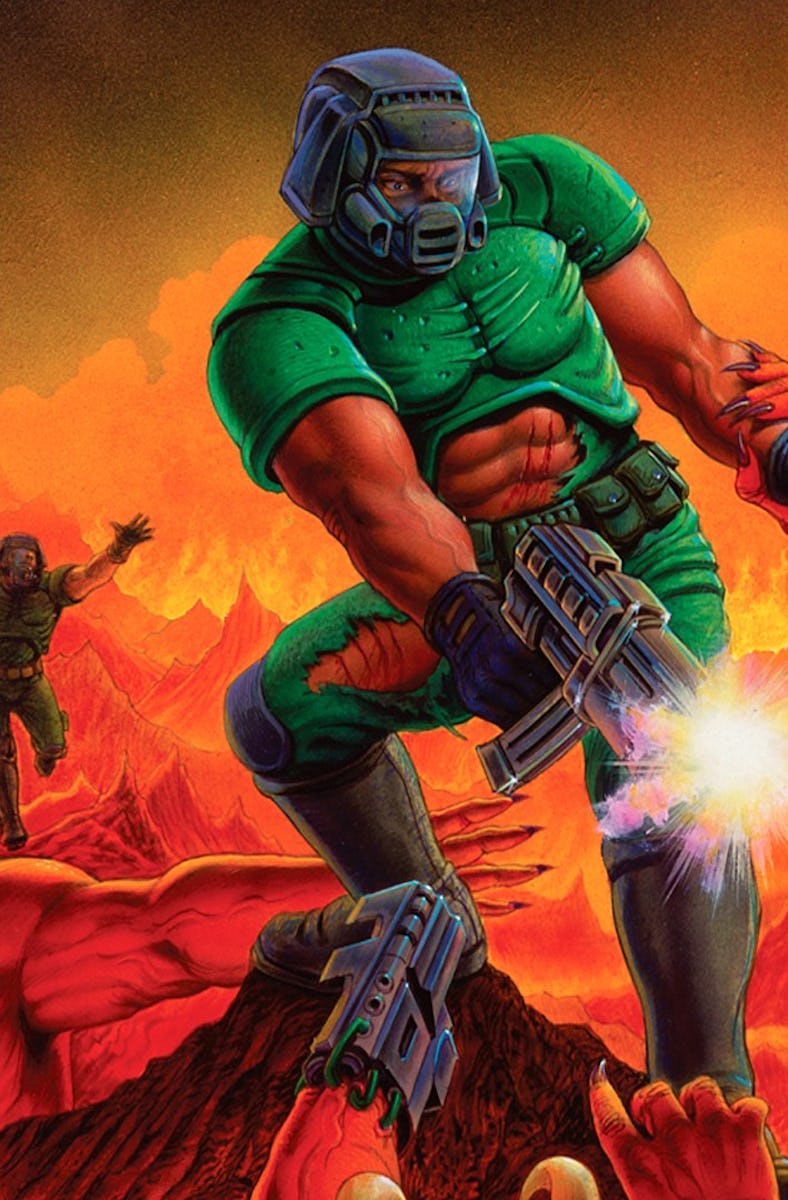The Most Iconic Sci-Fi Shooter Is Still Going Strong
30 years later, it’s impossible to ignore this classic FPS game’s legacy.

Many games released in the early ‘90s are remembered with fond nostalgia, but one beloved sci-fi shooter stands a cut above the rest. At least when it comes to cultural impact.
Hailed as one of the most defining entries in the first-person shooter genre, Id Software’s Doom was a breath of fresh air when it debuted on December 10, 1993. While FPS games were all the rage back then (Id Software even birthed the Wolfenstein series before Doom), this fast-paced, no-holds-barred multiplayer shooting gallery brought gamers together like never before.
30 years later, it’s impossible to ignore Doom’s impact on the FPS genre and the entire gaming industry. While multiplayer gaming is overwhelmingly common today, Doom officially launched the legacy of LAN parties by tapping into the human instinct to find thrill amid intense competition.
The overwhelming success Doom enjoyed (so much so that games of a similar vein were dubbed “Doom clones” for the longest time) hinges on several factors. For one, the game pioneered 3D graphics in an era of flat 2D sprites, which were incorporated into intricate level designs meant to intrigue and challenge the player. There was also little to no reliance on in-game lore to define the experience of barging into rooms and blasting through enemies, making Doom an exclusively adrenaline-fueled fever dream where every pixel mattered.
The game’s biggest selling point, however, was its multiplayer option that offered two modes: cooperative and deathmatch. While cooperate allows up to four players to band together and fly through campaigns, deathmatch pits two or four players against one another with a frenzied focus on being endlessly ultra-violent. The latter was decidedly more appealing, as it allowed players to unwind with friends without having to invest in a sprawling backstory.
What is this monster? Who cares, just shoot it!
Doom’s story begins on a military base on one of the moons of Mars and ends in literal Hell, but none of that matters when the heart of Doom has always been sprinting through horrifying hallways splattered with guts and gore. The labyrinthine maps encourage attentive exploration, but players were also constantly on the lookout for bloodthirsty demons or possessed beings, who with no mercy, viciously biting or clawing to deal considerable damage.
While the game’s deathmatch mode cemented its endlessly playable appeal, Doom was also a technical marvel. The game’s “Doom Engine” operated separately from in-game assets, making it possible for players to create their own levels and mods, or even adjust the rules of the core game. This previously unheard of level of flexibility brought gamers and developers closer together than ever before as they bonded over the freedom to flame demons as a melee berserker or even walk through walls during combat. Doom took community gaming to the next level.
The Cacodemons also served as mascot for the original Doom.
Doom channelled a specific brand of counterculture fury that felt provocative at the time, be it in the form of its groovy industrial metal-inspired soundtrack or the gritty visuals that mimicked a dark and moody horror experience. Looking back, it’s easy to trace the game’s influence on countless FPS entries to come, which took inspiration from Doom’s atmospheric design where every sound feeds into breathless speed-runs. The varied monsters were of a deliberate eldritch variety, realistically rendered to evoke the nightmarish toils of a space marine stranded on a foreign planet.
Although resource management is an essential component of Doom, your survival relies more on breakneck speed and efficiency than thoughtful planning. When three or more players competed in deathmatch mode, the aim was to grab as much ammo and health as possible while scurrying through the levels and shooting accurately to take everyone else out.
The game’s stark, straightforward interface bolsters this instinct. Doom’s UI denotes health, armor integrity, and ammo in massive blood-red digits while not bothering to display a score sheet reflecting player progress. There’s no need to keep up with the score when the objective is so fun and simple: keep pulling the trigger and stay alive.
30 years later, the original Doom is a reminder of an era in FPS gaming that felt intuitive and inventive in its community quotient and player flexibility — two things that are easy to take for granted in today’s landscape saturated with fast-paced shooters and multiplayer lobbies.